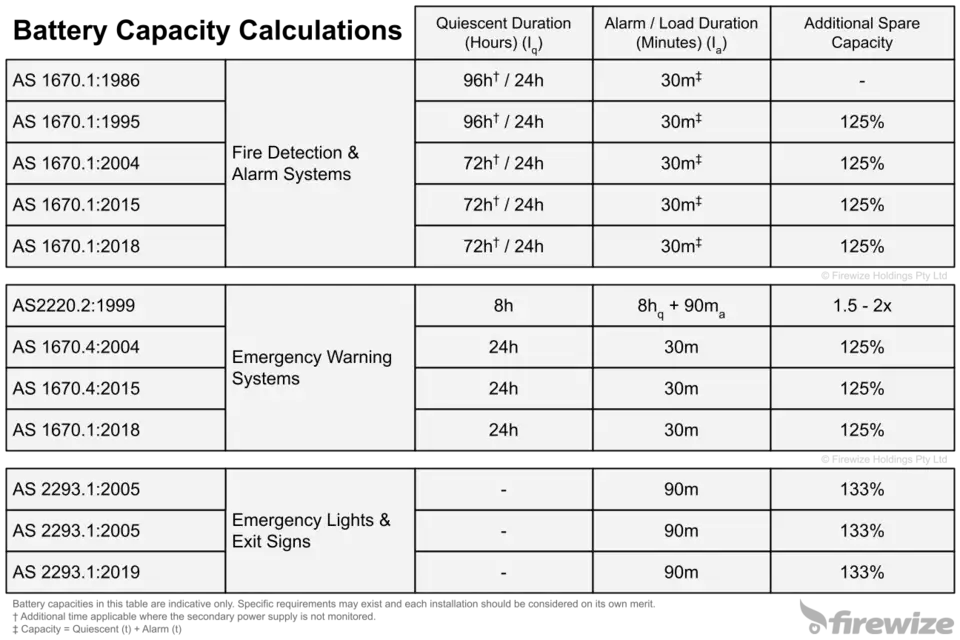The primary power source for a fire detection and alarm system (incorporating where applicable an occupant warning system), emergency warning systems (including sound and intercom systems for emergency purposes) and emergency light and exit sign systems in buildings is 240VAC mains power.
These systems also incorporate a secondary (reserve) power source such as a self contained battery or central battery system (in the case of some emergency light and exit sign systems).
These type of batteries are called stationary batteries and are manufactured to comply with Australian Standard / New Zealand Standard AS/NZS 4029.2, which is derived from IEC 60896-2.

